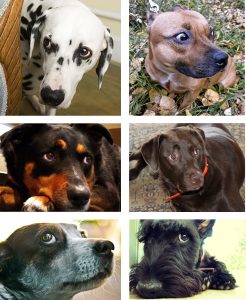No one wants to think they might need to prevent a dog attack. After all, dogs are some of the friendliest, most versatile and amusing groups of the animal kingdom. Boasting a wide range of forms, features, temperaments and talents, they love well, work hard and protect their own. They make the world fuller, friendlier, and funnier. But, as with any animal, instincts and personalities can dominate, sending them into a frenzy of fear, anxiety or aggression.
Though it is possible for any dog to attack, it is not probable to assume they will. However, in the name of safety and prevention, we offer a few tips to minimize your risk of injury during your interactions with the friendly (or not-so-friendly) neighborhood pooch. Here are some common-sense strategies to prevent a dog attack:
Respect personal space
Whether or not you’re familiar with the particular dog in your environment, be considerate of his space, picking up on his behavioral cues for his willingness to receive you into his personal bubble – but when in doubt, keep out. If he doesn’t know you, assume he perceives you as a threat. This especially applies to dogs that may be tied up or confined, as this may be sign of restraint due to aggression. And if it isn’t, this type of restraint can often CREATE animal aggression where it wouldn’t otherwise exist. Respect space.
Let sleeping dogs lie
As cute and cuddly as they may appear, resist the temptation to pet or disturb a dog while he is asleep. This tip applies to any situation where a dog is engaged in activity that makes him potentially unaware of your presence. Be especially vigilant to leave dogs alone when they are interacting with their possessions – food, toys, puppies. Dogs are especially protective of their possessions and may display aggressive or violent behavior to safeguard them.
Watch body language
If the dog displays any of the following behaviors, assume he’s not comfortable and inclined to attack:

-
-
-
-
-
-
-
- Tightening or stiffening of the body, tail or facial muscles
- Turning down the ears
- Furrowing the brow
- Moon-crested eyes: Eye rolling with the whites visible (also known as “whale eyes”)
- Yawning, Lip licking or Tongue Flicking
- Excessive panting
- Intense staring
- Backing away
- Snarling
-
-
-
-
-
-
Should the dog exhibit any of the behaviors listed, slowly, quietly back away from him. Resist the urge to turn your back on him and run, or to make sudden movements or noises as he may instinctually attack. Click here for a video on identifying anxious dog behavior.
If you believe he’s about to attack
- Remain calm. Do not scream or run – instincts will kick in and he may attack.
- Stand still and slightly angled, with your hands at your sides, avoiding eye contact, but keeping him in your field of vision – staring him down will seem threatening to him.
- Once the dog seems no longer interested, back away quietly and slowly until you are no longer visible to him.
| What to do if you’re attacked by a dog |
There is a lot you can do to prevent a dog attack. Remember to use common sense when dealing with all animals, especially those you don’t know. It is completely reasonable to exercise caution and sensitivity around dogs, even your own, bearing in mind that they are natural predators.
When in doubt, avoid interaction with dogs, especially breeds with a temperament toward aggression. Click here for a list of historically aggressive breeds. But regardless of breed or history, dogs that sense fear or anxiety may respond with stress or violence. Remember to live wisely, but not fearfully.
In the proper environment and ideal circumstances, dogs are wonderful companions, loyal friends and great playmates. A healthy respect, coupled with warm appreciation of these amazing creatures, can ensure safe and enjoyable experiences with these furry friends.
————
Check out the Centers for Disease Control and Prevention website for facts, figures and additional information on how to prevent a dog attack.
————
The family at Joseph M. Ghabour & Associates wants to remind you that we’re here for you. If you or someone you know has been attacked by a dog, please let us help. Give us a call at (877) 721-7201 or drop us a line.
